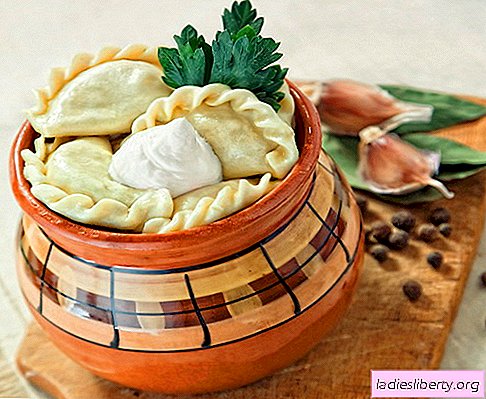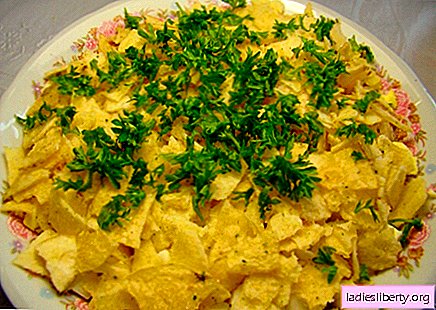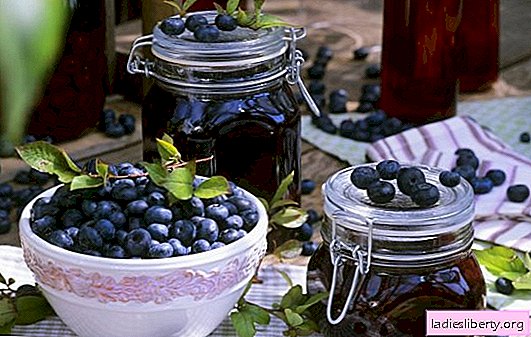
Borsch, like cabbage soup - is a dish with history, with the only difference being beetroot. This root crop is the main feature of the first dish of South Russian, and subsequently - Ukrainian cuisine, as well as of all the peoples inhabiting the South Russian lands since the beginning of the ninth century. It was at that time that beets first appeared on the territory of the Old Russian State.
What you need to know to cook a real Ukrainian borsch? About the basic subtleties of its preparation - in step-by-step recipes and tips.
Step-by-step recipe for cooking Ukrainian borsch - basic technological principles
The taste and nutritional value of the first dishes in Slavic cuisine lies in the technology of preparing the broth. Delicious broth - the dish is half ready! This rule is the same for borscht and cabbage soup, with the only difference being that classic cabbage soup is made from beef or veal, and the broth for classic Ukrainian borscht is made from pork.
But recently, step-by-step recipes of Ukrainian borsch have become more democratic in using the most expensive ingredients, and expensive pork or beef in their recipe can be completely replaced with chicken or bone set. By the way, from tubular bones the most saturated and tasty broth turns out.
Borsch is a dish that has many cooking options in regional cuisines, but South Russian borsch is fundamentally different from Moscow or Siberian borsch. The difference lies in the order of bookmarking products and, in some cases, in the methods of their preliminary preparation.
Of course, speaking of a step-by-step recipe for cooking borsch, you can not stop at the preparation of beets. Now this root crop is widespread throughout Russia, but the experience of its use in the first dishes first came to the southern part, since the vegetable was originally a southern and heat-loving plant, while breeders did not work on the cultivation of many varieties.
Accordingly, the experience of its use in cooking initially spread to the south of Russia. Kuban and Don Cossacks, Ukrainian "gospodarki" noticed earlier than others that there are table beet varieties that are better used for salads and vinaigrettes, and there are root crops with a less saturated color, from which borsch is prepared in the south.
For some reason, in the northern regions of the country, housewives believe that borsch should have a rich burgundy color, which is surprising for Ukrainian women who boil beetroot (Ukrainian) until the broth is completely clarified, trying to prevent the potatoes from turning pink when laid.
Ukrainian borsch, like all the first dishes of Slavic cuisine, is seasoned with acidic components, but this is not sauerkraut, as in cabbage soup, but tomato dressing, or sorrel and cowhide (chard is a type of leaf beet) - in spring versions of a step-by-step recipe. A feature of Poltava borsch: dressing is prepared in bacon. Lean Ukrainian borsch is seasoned with vegetable oil, and for thickening, beans, mushrooms are added to it; in some regions of Ukraine, dumplings are prepared for thickening borsch - a type of dumpling, pastry made from unleavened dough - the influence of Polish cuisine.
Traditional Ukrainian borsch - one step-by-step recipe in three variants
Ingredients:
For broth:
Meat and meat and bone set 1.8-2.0 kg
Water 4.5 L
Roots: parsley, celery, carrots, onions
Spices: Jamaican and black pepper (peas), coriander, bay leaf
Spicy greens: dill, parsley
For refueling:
Tomatoes (pasta, mashed potatoes, fruit drinks, juice - optional)
Onion
Carrot
Fat (pork or vegetable)
Fresh white cabbage
Parsley and dill leaves
Salad and hot pepper
Garlic
Potatoes
Ground spices and salt to taste
Beans
Cooking Technology:
First, general technological recommendations on the amount of ingredients and the consistency of Ukrainian borsch: the step-by-step recipe only shows the weight of the meat and the volume of water, in order to understand that the broth should be saturated. The remaining ingredients are added exclusively to taste and so that the ratio of liquid to solid ingredients in the dish is the same.
In Slavic cuisine, before the beginning of the Petrine era, when national cuisine was significantly influenced by French cooks, there was no such thing as an exact measure in the recipes of Russian dishes, and all components were added “by eye”. French lawmakers worked, of course, only in the master's kitchen, and from there the “exact recipe” passed, over time, into taverns, into the Soviet public catering and has been preserved until now in technological maps of cafes and restaurants.
In Slavic folk cuisine, weights have never been used, and this principle has also been preserved in home Russian (and Ukrainian) cuisine so far. This explains the variety of tastes of cabbage soup and borsch - each family has its own preferences.
Now you can do the cooking of the broth. You need to cook it for a long time, because the meat should be simmering over low heat, and during this time you can prepare all the other ingredients in order to shorten the cooking process.
1. Pay attention to the broth as much as possible. Wash the meat. The cooking time depends on his choice, but in the end, the cooked meat should be easily separated from the bone. Wash it.
If you use pork, soak it in acidified water: this technique will help reduce the content of bad cholesterol. To soak, prepare a 10% solution of table vinegar. Of course, this is best done in advance, a couple of hours before the start of cooking.
Soaking for other types of meat is advisable. In the process of cooking meat, foam forms, which must be removed so that the broth is clean and transparent, but if the meat is previously aged in water, then you can save yourself from worries, stand with a slotted spoon over the boiling meat broth.
2. Prepare spicy roots and carrots: wash and peel.
3. Wash one medium-sized onion and cut off only the roots, leaving the upper golden scales to give the broth a beautiful color.
4. Prepare fresh greens: wash, separate large green stems from leaves. Tie the stalks with a bunch, using a thread, and leave the leaves temporarily aside.
5. Select a pan of the appropriate size. After immersing meat in it and filling it with cold water, there should be free space - 5-7 cm from the surface of the water to the edge.
6. Dip meat and bones in cold water. If you will then prepare salads from the pulp, for example, dip the meat in boiling water: in this case, it retains taste and juiciness during cooking. If the meat is intended only for borsch, then it is boiled, dipped in cold water, then removed from the prepared broth, cut portionwise and added to the plates at serving.
7. Add peeled roots and onions. Put the pot on the fire. Cook for about an hour. Try to pierce the flesh - the meat should easily slide off the fork or knife. At this point, you can lower the stalks of parsley and dill connected into a bunch into the broth, add bay leaf, peppercorns, coriander seeds - if desired.
8. After ten minutes, remove the meat and bones, transfer to a plate. Strain the broth and pour back into the pan. Let it boil. The broth is ready. It can be welded in advance.
It was a step-by-step recipe for cooking broth, which is prepared for all the first dishes of Russian cuisine, exactly the same, and from that moment the preparation of home-made Ukrainian borsch begins.
9. Beets are cooked for a long time, so you need to start working with it. Wash, peel a medium-sized root crop - 150-200 g. Choose not a dark flesh, but a lighter one with a striped pattern on the cut - it will boil faster and will not stain potatoes.
There are two options for preliminary preparation of beets: peeled beets can be grated on a coarse grater and put in a boiling broth, or grated beets must first be stewed in a small amount of vegetable oil, and then put in the broth. Cook on low heat, like meat, covering the pan with a lid.
Borsch dressing with beetroot is sold in stores. Some housewives add it to the borsch at the very end of cooking, along with sour dressing, but such a step-by-step recipe has nothing to do with Ukrainian borsch. The dish gets red color only by adding tomato dressing, and borsch should not be burgundy. All other options for borscht are more reminiscent of beetroot soup or botvini technology.
10. While the beets are cooked in the broth until completely clarified, prepare the remaining ingredients: wash, peel and dice the potatoes; chop the peppers, cabbage, chop the leaves of parsley and dill. If desired, prepare 2-3 cloves of garlic, finely chopped them, hot pepper. Transfer all this green mass to a separate container to immerse in a pan with borsch at the very last moment.
11. Prepare the tomato dressing. For the summer version of borsch, you can use fresh tomatoes. Blanch them, wipe through a sieve. It will take about 1 kg of vegetables. Bring mashed potatoes to a boil. To make the color of the borscht more saturated, you can add tomato paste or sauce to fresh mashed potatoes, but watch out for the taste so that the dish is not too acidic.
12. Dice 2-3 medium-sized onions, grate the carrots.
13. To pass onions and carrots in a deep frying pan, heat the fat. There are also possible options: ghee pork fat (lard - Ukrainian), bacon, vegetable oil, margarine or ghee. You can use different combinations of the listed products.
The bacon should be pre-cut into small cubes and melt the fat in a hot pan. If desired, the sunken pieces of pork fat can be removed from the pan with a slotted spoon, or left by adding them along with dressing in borsch.
14. Put the carrots in the heated fat, after 3-4 minutes, when the carrots become soft, add the onions. Stew the vegetables until the onions are transparent, and then pour the tomato puree into the pan. Adjust the temperature to a minimum level, extinguish the charge until the liquid evaporates. During this time, the tomato will acquire a deep red saturated color.
15. When the beets are boiled out and the broth becomes bright yellow, and the pieces of beets become transparent white, put the potatoes in a pan and cook until tender, but do not digest.
16. Add ready-made tomato dressing and let the borscht boil.
17. Now you can put pepper, salt, bay leaf to refresh the aroma of the broth. After 2-3 minutes, put chopped cabbage and the rest of the greens. Immediately after boiling, turn off the heat, cover the pan with a lid and leave for 20-30 minutes.
18. You can serve. Put in the plates pieces of meat, borsch, add sour cream or mustard.
Mushrooms or beans for adding to borsch should be pre-moistened, soaked in cold water, washed and boiled. These components are added to the soup with potatoes.
Step-by-step recipe for Ukrainian borsch - useful tips
- Large vegetables contain more fiber. This also applies to beets. Try to choose small root vegetables, as they contain less coarse fibers that boil for a long time and even after that they remain quite stiff, rough to the taste.
- To make beets tastier, passer in vegetable oil, adding a little sugar. Do the same with carrots and onions.
- Ukrainian borsch with meat retains its taste even for two to three days. Before serving, it is enough to warm it up, not bringing to a boil. To restore flavor, add fresh herbs and a little chopped cabbage when warming. Borsch will appear fresh even the day after its preparation.
- Lean Ukrainian borsch is cooked in vegetable oil and vegetable broth: slightly adjust the recipe described above. Instead of meat broth, use a mushroom broth or a bean broth. But for lean borsch, beets must be extinguished beforehand, because in ordinary water it acquires a not very pleasant color and taste.











